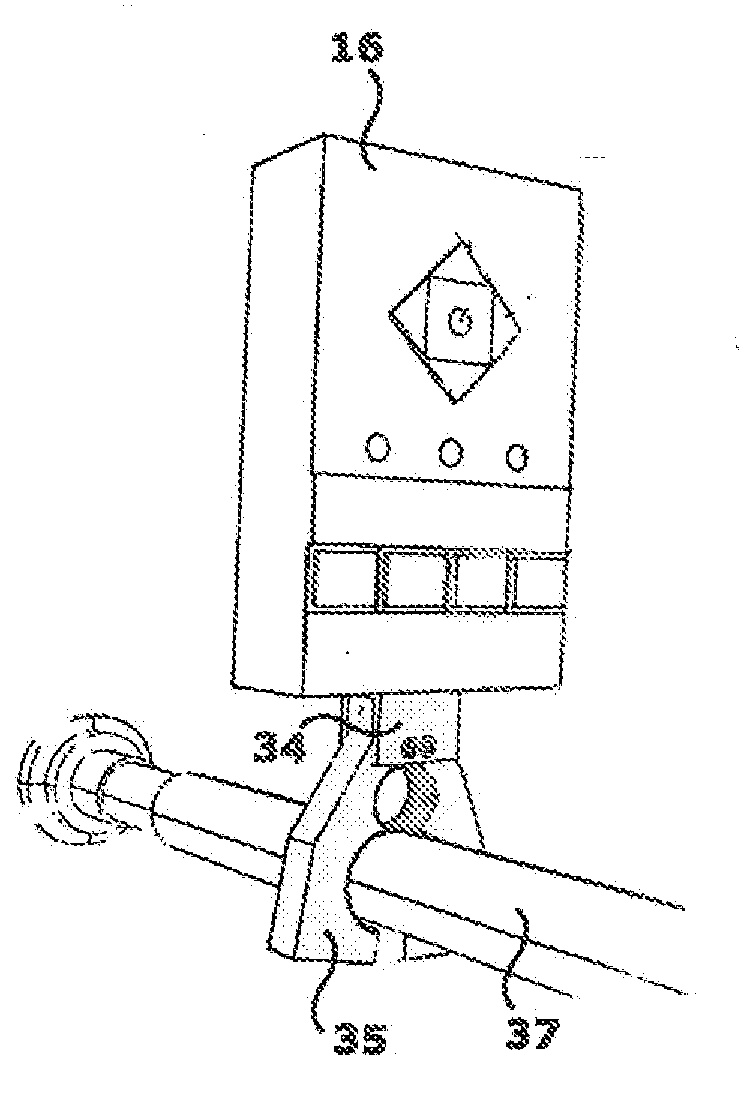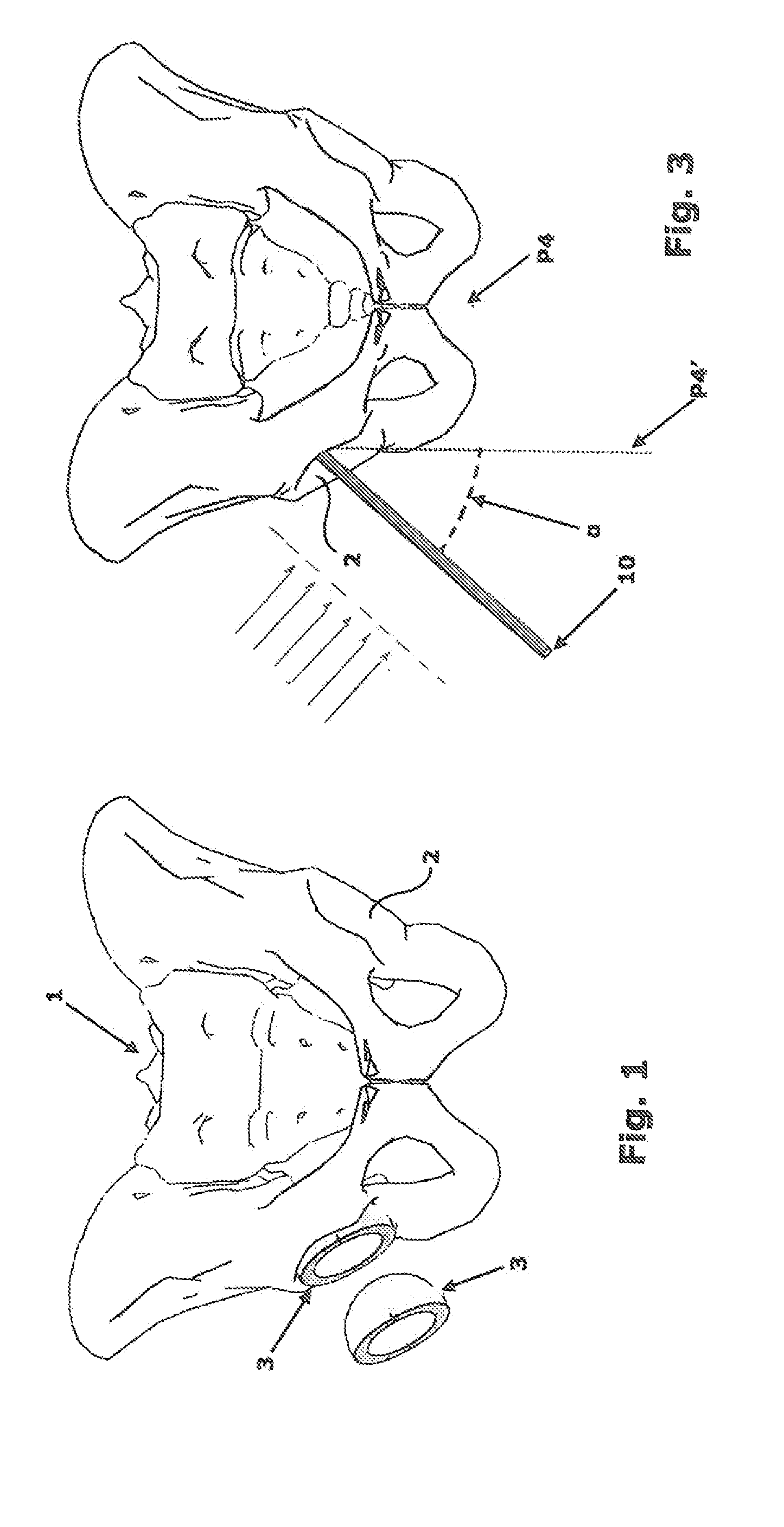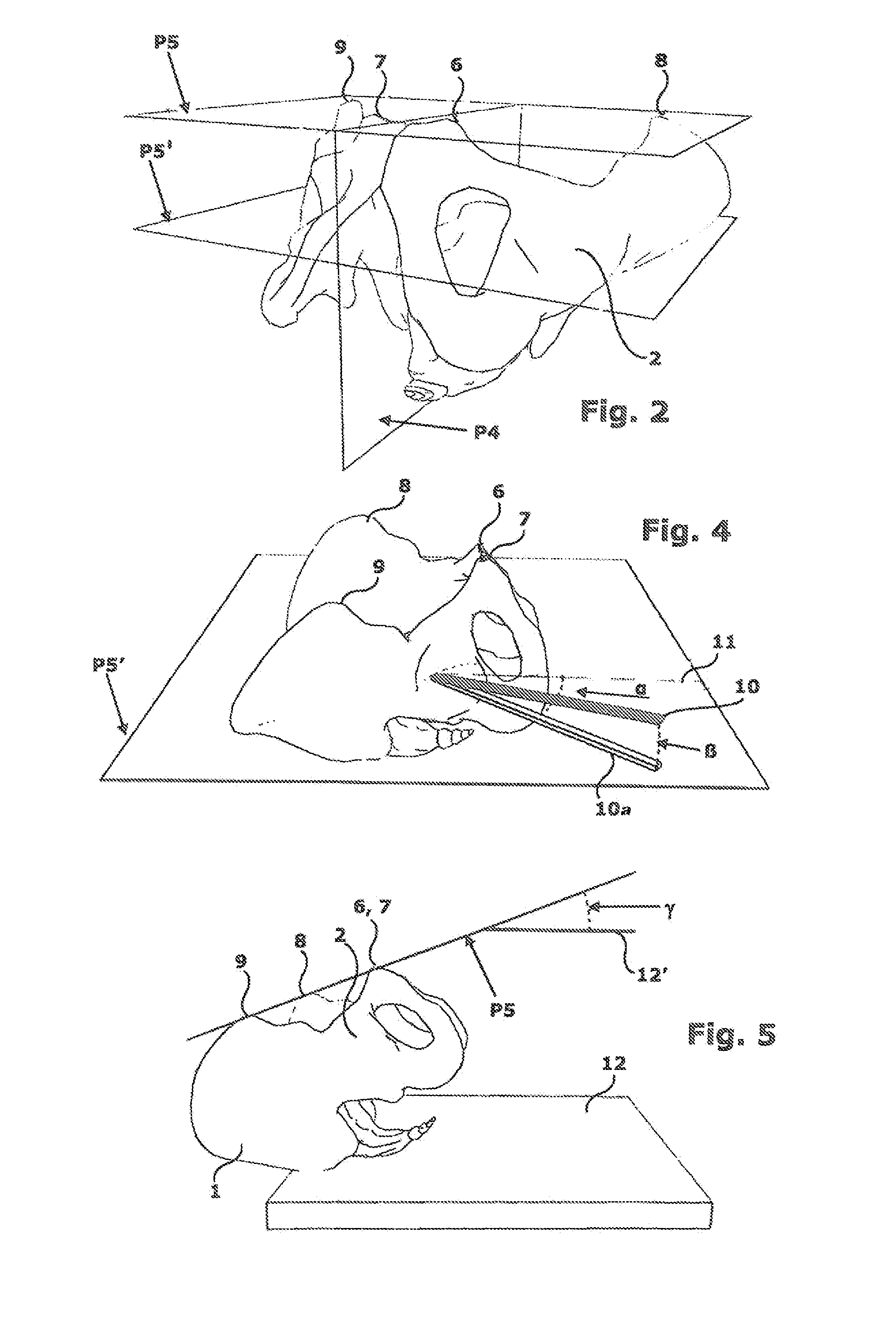Apparatus for the orientation and positioning of surgical instruments and of implantation prosthesis in a bone seat
- Summary
- Abstract
- Description
- Claims
- Application Information
AI Technical Summary
Benefits of technology
Problems solved by technology
Method used
Image
Examples
first embodiment
[0049]In the invention, illustrated in FIG. 10A, box 26 embeds position detection means and signalling means of the detected position. On the front of the box an activation button 28 and a signalling light 29 are available.
[0050]The position detection means and the detected position signalling means within box 26 belong to the prior art, according to which different possible technical ways are provided for providing an accurate position detection, i.e. a detection which univocally determines the position and the orientation in space of the fixed sensor 17 with the desired precision degree, for example using gyroscopes, accelerometers or magnetometers. Such technical ways are not disclosed here in detail since they do not fall within the scope of protection of the present invention.
second embodiment
[0051]In the invention, illustrated in FIG. 10B, box 26 contains no intelligent function, but represents a simple support 26a of 4 or more blocks of reflective material 29a, 29b, 29c, 29d, so as to allow the remote detection of the exact position of said support 26a, and hence of the pelvis during surgery, through the analysis of a light radiation reflected by said blocks 29, as better described in the following.
[0052]The compasses-like instrument 15 is in turn in the shape of a support 30 to which two legs 32 are connected below, which legs may be spread apart and adjusted in position in the way better described in the following. Above, support 30 is provided with a tang 31, meant to be inserted precisely (and in a single position) into the hole 16a formed in the lower face of central unit 16, in the way highlighted in FIG. 13.
[0053]Clamp 18 consists of a base 33, from which a tang 34 projects upwards 34 (fully identical to tang 31) for the coupling with central unit 16. To the low...
PUM
 Login to View More
Login to View More Abstract
Description
Claims
Application Information
 Login to View More
Login to View More - R&D
- Intellectual Property
- Life Sciences
- Materials
- Tech Scout
- Unparalleled Data Quality
- Higher Quality Content
- 60% Fewer Hallucinations
Browse by: Latest US Patents, China's latest patents, Technical Efficacy Thesaurus, Application Domain, Technology Topic, Popular Technical Reports.
© 2025 PatSnap. All rights reserved.Legal|Privacy policy|Modern Slavery Act Transparency Statement|Sitemap|About US| Contact US: help@patsnap.com



